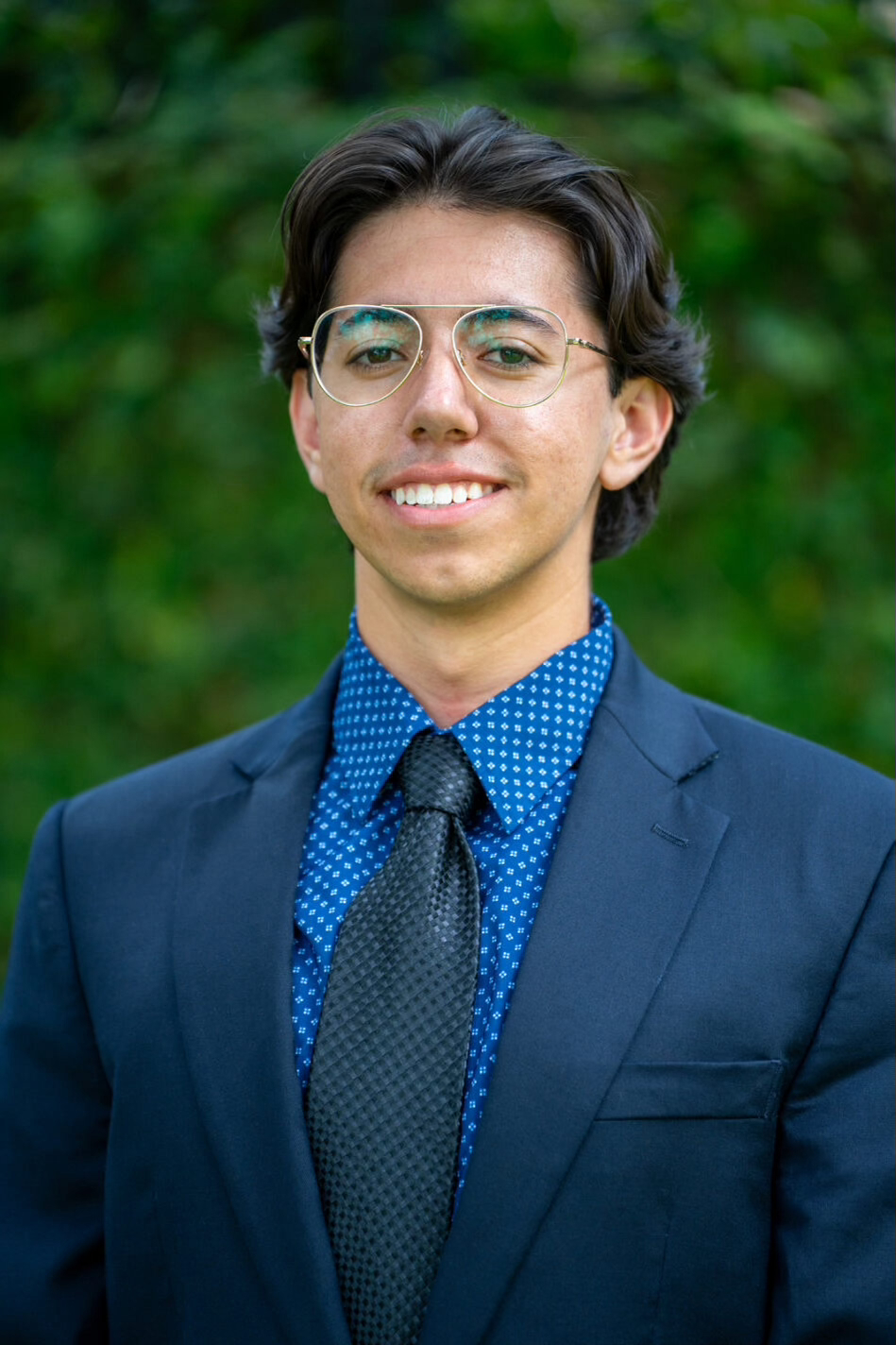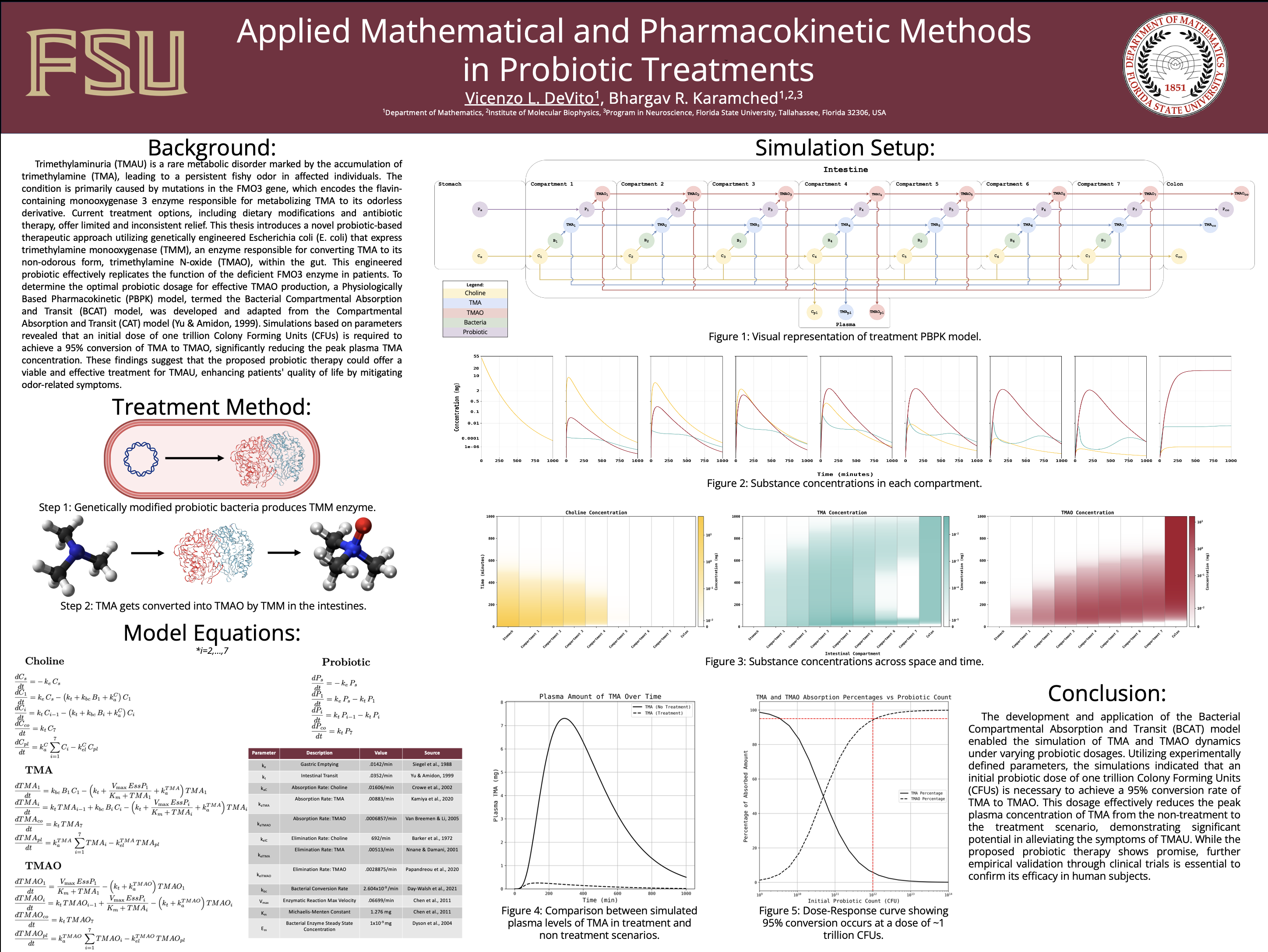Research Symposium
25th annual Undergraduate Research Symposium, April 1, 2025
Vicenzo DeVito Poster Session 1: 9:30 am - 10:30 am/ Poster #268

BIO
As an Applied and Computational Mathematics graduate from Florida State University, my research focuses on mathematical modeling for biological applications. I developed the Bacterial Compartmental Absorption and Transit model for my undergraduate thesis, analyzing probiotic treatments for trimethylaminuria. At Rutgers, I researched CRISPR-edited cancer cells and analyzed gene expression data. I'm passionate about protein design, systems biology, and applying Monte Carlo methods to complex biological problems. Outside the lab, I enjoy film photography, developing my own negatives and restoring vintage cameras, and music, playing guitar, piano, and bongos with a special love for jazz. My goal is to continue applying mathematical modeling to biological systems while making mathematics and computational biology more accessible to everyday student scientists through writing books on these topics. I'm also committed to mentoring others, as I currently do with the Prison Math Project developing accessible programming curriculum.
Applied Mathematical and Pharmacokinetic Methods in Probiotic Treatments
Authors: Vicenzo DeVito, Bhargav KaramchedStudent Major: Applied and Computational Mathematics
Mentor: Bhargav Karamched
Mentor's Department: Department of Mathematics Mentor's College: College of Arts and Sciences Co-Presenters:
Abstract
Trimethylaminuria (TMAU) is a rare metabolic disorder marked by the accumulation of
trimethylamine (TMA), leading to a persistent fishy odor in affected individuals. The
condition is primarily caused by mutations in the FMO3 gene, which encodes the flavin-
containing monooxygenase 3 enzyme responsible for metabolizing TMA to its odorless
derivative. Current treatment options, including dietary modifications and antibiotic
therapy, offer limited and inconsistent relief. This thesis introduces a novel probiotic-based
therapeutic approach utilizing genetically engineered Escherichia coli (E. coli) that express
trimethylamine monooxygenase (TMM), an enzyme responsible for converting TMA to its
non-odorous form, trimethylamine N-oxide (TMAO), within the gut. This engineered
probiotic effectively replicates the function of the deficient FMO3 enzyme in patients. To
determine the optimal probiotic dosage for effective TMAO production, a Physiologically
Based Pharmacokinetic (PBPK) model, termed the Bacterial Compartmental Absorption
and Transit (BCAT) model, was developed and adapted from the Compartmental
Absorption and Transit (CAT) model (Yu & Amidon, 1999). Simulations based on parameters
revealed that an initial dose of one trillion Colony Forming Units (CFUs) is required to
achieve a 95% conversion of TMA to TMAO, significantly reducing the peak plasma TMA
concentration. These findings suggest that the proposed probiotic therapy could offer a
viable and effective treatment for TMAU, enhancing patients' quality of life by mitigating
odor-related symptoms.
Keywords: Pharmacokinetics, Trimethylaminuria, Differential Equations, Mathematical Modeling, Probiotic


